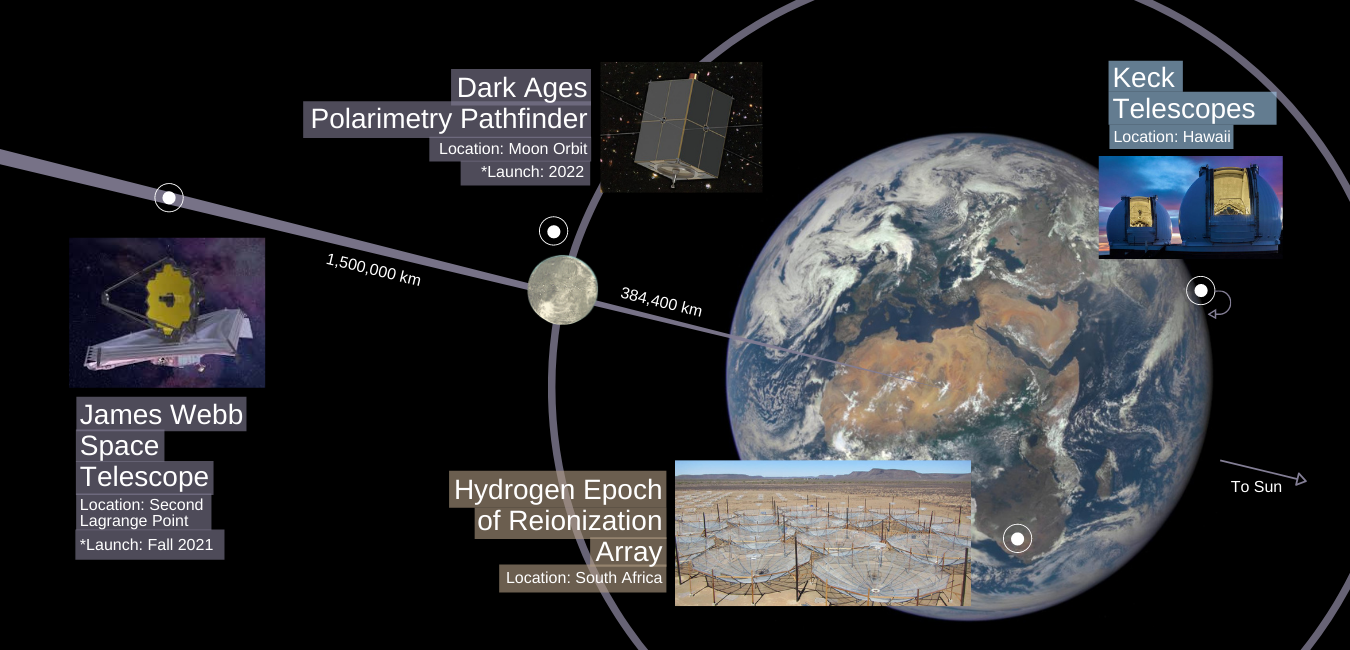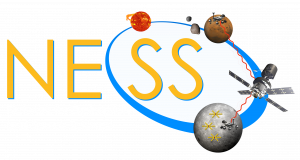Low-Frequency Radio Telescopes
During most of the Cosmic Dawn, the vast majority of matter in the Universe remained outside of galaxies, and to measure its properties we must use different techniques. Amongst the most exciting is to study the spin-flip background generated by these atoms, which we hope to observe with radio telescopes operating in a similar frequency range to television antennas. Such observations are extremely challenging, in part because of interference from Earth, but telescopes are already attempting them.
Image: HERA, 2016
Credit: HERA Construction Photo log
Lunar Radio Telescopes
The spin-flip background is so difficult to detect - partly because of signals generated on Earth itself. Removing this contamination is a challenging problem, but it is much easier if the telescope can be shielded from the radio transmitters on Earth! The far side of the Moon offers just such an opportunity, and astronomers are hoping to use it as a platform to observe the Cosmic Dawn.
Image: concept of DAPPER on the moon.
Credit: NASA/JPL-Caltech/Jack Burns, Univ. of Colorado, Boulder
Near-Infrared Space Telescopes
Although the first stars and galaxies were luminous in optical and even ultraviolet light, their light is stretched out, or redshifted, as it travels through the Universe toward Earth. For such distant sources, the stretching is so extreme that their ultraviolet light is shifted all the way to the near-infrared - a regime in which Earth's atmosphere makes observations difficult. Fortunately, the Hubble Space Telescope has near-infrared cameras that have taken exquisite pictures of distant galaxies, and studying these objects in even more detail is one of the key projects of the James Webb Space Telescope, due for launch in late 2021.
Image: James Webb Space Telescope concept
Credit: Northrop Grumman
Ground-based Near-Infrared Telescopes
Although the atmosphere presents challenges for observing in the near-infrared, it is far from impossible. Ground-based telescopes have the advantage of size, which determines how much light a telescope can collect from these distant galaxies. The Keck Telescopes and other large observatories (with mirrors about 30 feet, or 10 meters, across – four times more than Hubble's mirror) have helped us to understand some of the detailed properties of distant galaxies. This decade will see the construction of several even larger telescopes, up to 100 or so feet (or 30 meters) across – four times larger than the James Webb Space Telescope. This new generation of telescopes, such as the Thirty Meter Telescope, will be crucial for making careful measurements of galaxies in the Cosmic Dawn.
Image: Keck Observatory
Credit: Ethan Tweedie Photography/W. M. Keck Observatory
Other Telescopes
Astronomers are always seeking new ways to study the Cosmic Dawn. Some telescopes, such as SPHEREx, will map emission from galaxies with telescopes that are intentionally blurry – which, counterintuitively, allows them to observe the light from the faint galaxies normally hidden from view! Another exciting prospect is that future gravitational wave telescopes will detect the signatures of colliding black holes at enormous distances – even into the Cosmic Dawn. Meanwhile, microwave telescopes have already taught us about the Cosmic Dawn, and other radio telescopes are starting to observe the contents of galaxies during the first billion years of cosmic history.
Image: SPHEREx concept
Credit: NASA JPL



